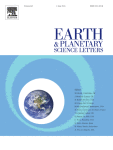The convection of a conducting liquid alloy of iron and nickel inside the Earth results in the formation of its magnetic field. This field protects our atmosphere from the harsh solar radiation which would otherwise strip the atmosphere and water from the surface, leaving a barren planet like the rest of our rocky cousins.
Some have speculated that the impact of a planetesimal contributed additional iron-nickel alloy to enhance the field and its duration, and also formed the moon from the resulting ejecta. This would require major differentiation of the much smaller impactor, which some find doubtful at such an early stage of its formation.
Others believe this longevity relates to geological features which result in superior heat trapping within the mantle, dramatically slowing the core's cooling. (Mercury, despite its small size, has a magnetic field strength of about 1% that of Earth, and is believed to result from a molten core.) Whatever the case, we would not be here except for something unique about Earth that has maintained its liquid core for billions of years, and counting. Is the Moon part of the answer to our existence, or is it something else entirely?!
Some have speculated that the impact of a planetesimal contributed additional iron-nickel alloy to enhance the field and its duration, and also formed the moon from the resulting ejecta. This would require major differentiation of the much smaller impactor, which some find doubtful at such an early stage of its formation.
Others believe this longevity relates to geological features which result in superior heat trapping within the mantle, dramatically slowing the core's cooling. (Mercury, despite its small size, has a magnetic field strength of about 1% that of Earth, and is believed to result from a molten core.) Whatever the case, we would not be here except for something unique about Earth that has maintained its liquid core for billions of years, and counting. Is the Moon part of the answer to our existence, or is it something else entirely?!
Last edited:



